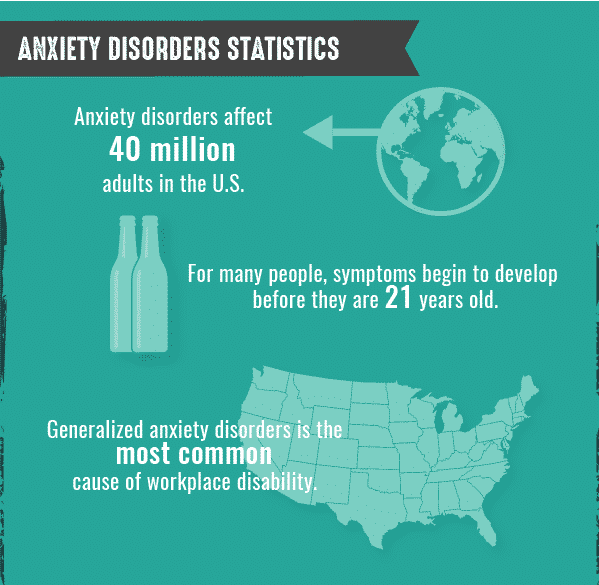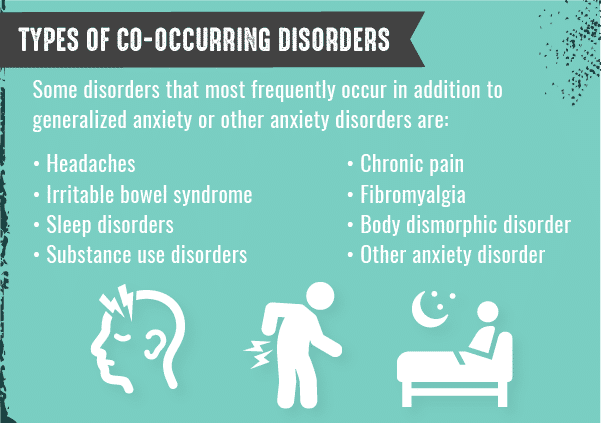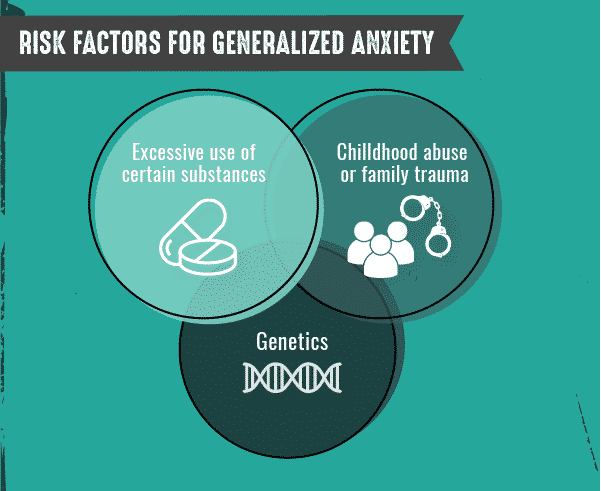Learn surprising facts and statistics about generalized anxiety disorder.
Generalized anxiety disorder (GAD)is amental healthcondition characterized by specific symptoms. These symptoms include ongoing and excessive worry about different concerns. The worry isn’t limited to one particular reason or source.
When someone has generalized anxiety disorder, they may worry about health, their family, relationships, work, money or other matters. The sense of worry feels out of control for the person experiencing it and someone’s worry may be out of proportion to actual events or it could be linked to no specific reason at all.
A diagnosis of GAD means that someone has a sense of worry that’s uncontrollable or difficult to control for at least six monthsaccording to the Anxiety and Depression Association of America (ADAA). Other possible symptoms of generalized anxiety may include:
- Feeling irritable or edgy
- A sense of nervousness
- The feeling of impending doom, danger or panic
- Rapid heart rate and breathing
- Sweating
- Trembling
- Feeling tired or fatigued
- Concentration problems
- Sleep disturbances
- Gastrointestinal symptoms
Generalized anxiety disorders statistics and facts tend to showcase how pervasive this mental health issue is. People may feel alone when they live with an anxiety disorder until they learn more about generalized anxiety statistics and how common it is.
Prevalence of Generalized Anxiety Disorder
It’s normal for everyone to experience situational anxiety at different points in their life. Anxiety becomes problematic when it leads to ongoing distress and impairs daily functionality.
Among mental health issues and disorders, anxiety disorders are the most common in the United States.
According to the National Alliance on Mental Illness (NAMI), anestimated 40 million adults in the U.S. have an anxiety disorder. This number doesn’t specifically refer to the generalized anxiety disorder prevalence, but it does provide an overview of the commonality ofanxiety disorders. In children and teens, an estimated eight percent are believed to have anxiety disorders. For many people, symptoms begin to develop before they are 21-years- old.
Regarding generalized anxiety disorder specifically, it’s reported to affect 6.8 million adults in the U.S., according to information provided by the ADAA. When discussing generalized anxiety disorder demographics and statistics, it’s of importance to note it’s themost common cause of workplace disability in the United States.

Generalized Anxiety Disorder Demographics
While anyone can have generalized anxiety disorder, there are GAD gender differences. For example,women are twice as likely as mento have an anxiety disorder in their lifetime.
Generalized anxiety disorder also affects particular demographics of women more than others. For example, more American Indian/Alaskan Native women have GAD compared to other ethnicities and races. Compared to Asian or African-American women, GAD affects white women more significantly.
Generalized Anxiety in Adults
How many American adults suffer from generalized anxiety disorder? When it comes to generalized anxiety disorder in adults, it was reported that an estimated 6.8 million adults are affected during a year, or 3.1 percent of the population in the United States.
Globally around four percent of people may experience generalized anxiety disorder at some point in their life and the median age of onset for GAD is 31-years-old. The symptoms tend to appear more gradually than other types of anxiety disorders.
Generalized Anxiety and Co-Occurring Disorders
It’s common for people with an anxiety disorder to also have a co-occurring mental health disorder or physical health condition. This is referred to as a co-occurring disorder.
Research shows that among people with GAD, more than 90 percent have another psychiatric diagnosis.Major depressive disorderis the most common, 48 percent of patients are also diagnosed with generalized anxiety disorder. If someone has co-occurring disorders, all disorders need to be effectively treated. Otherwise, the symptoms of anxiety can be more severe because of the co-occurring disorder component.
Some disorders that most frequently occur in addition to generalized anxiety or other anxiety disorders, not including depression, are:
- Headaches
- Irritable bowel syndrome
- Sleep disorders
- Substance use disorders
- Body dysmorphic disorder
- Chronic pain
- Fibromyalgia
- Other anxiety disorders

Risk Factors for Generalized Anxiety Disorder
While there’s not one factor or combination of factors that can determine whether someone will have GAD, there are certain risk factors ofgeneralized anxiety disorderthat may increase the likelihood. Generalized anxiety disorder risk factors can include:
- Family members with a history of anxiety disorders
- Childhood abuse or trauma
- Excessive use of certain substances including caffeine
- Ongoing, prolonged exposure to stressful environments or situations

Statistics on Generalized Anxiety Treatment and Recovery
When someone is diagnosed with generalized anxiety, there are severalcourses of treatmenta medical provider may consider. Typically, a combination of treatment approaches may be used for GAD.
Recovery from generalized anxiety disorder is possible. The recovery rate is around 57 percent with a psychotherapy approach according to Psychology Today. However, because of the difficult nature of treating GAD, this rate could be higher with the inclusion of other forms of treatment like medication or alternative therapies.
Ranging from 50 to 60 percent of patients who receive therapy for GAD do show a positive response. Factors that can impact the response to treatment include the quality of care, the provider’s experience in treating GAD and the duration of treatment. Typically, the longer someone remains in a treatment program or receives ongoing treatment, the better their outcome may be.
While treatment can significantly help someone with GAD manage their symptoms, many people don’t seek treatment. The generalized anxiety disorder treatment rate is relatively low because of various factors.
For someone living with GAD, seeking treatment is important to alleviate symptoms and improve quality of life. To learn more about treatment forco-occurring anxiety disordersand substance use disorders,contact The Recovery Villageand a representative can help you learn more about which treatment program could work for you.



